Pros
Cons
Introduction
Design & Appearance
{{section_header}}{{section.name}}{{/section_header}}
The Samsung NX1000 has a small sleek design that is becoming the standard for entry-level mirrorless cameras. The frame is short and thin, and it's not even much thicker than that of a medium-sized point and shoot camera. It's also nearly identical in size (body only) with the NX1000's step-up brother, the NX210. The difference, however, is in the material the body of the camera is made out of. Where the NX210 has a durable, metal finish, the NX1000 features a plastic casing. The plastic still feels strong, but it's still likely to wear out quicker than a metal surface.
The NX1000 comes in white, black, or pink, with the color of the kit lens matching the your color preference for the camera (same goes with the color of the provided flash accessory).
Tour
{{section_header}}{{section.name}}{{/section_header}}




Menu
{{section_header}}{{section.name}}{{/section_header}}
Samsung definitely put some energy into revamping the menu interface on its new NX cameras, but the results aren't anything revolutionary. The main update comes in the form of a quick-access function menu (called Smart Panel) that lets you manipulate certain controls without forcing you to enter the main menu system. The main menu is still your traditional linear menu that you can navigate using the dial on the back of the camera.
More useful than the function menu is Samusng's i-Function lens system that allows you to set certain controls using the lens ring on most NX lenses (any NX lens with i-Function compatibility). This truly gives you freedom to adjust controls on the fly, and it helps make the NX1000 handle more like an old-fashioned DSLR with a dedicated aperture ring.
Ease of Use
{{section_header}}{{section.name}}{{/section_header}}
The Samsung NX1000, like many of the companies new tech products, is called a "Smart" device. This means it is equipped with a number of new, wireless features that supposedly bring the camera to the next step of user interface. With the NX1000 you can transfer images wirelessly from the camera to a computer, you can send images to a similarly "Smart" television, and you can turn your iPhone into an external viewfinder for the camera.
These features are definitely fun to read about, and some of them are even fun to play with, but do they make the NX1000 easier to use? Not quite. The "Smart" technology is still too new for people to immediately understand what's going on and how to use it without at least a little bit of confusion. Wirelessly connecting your camera to a computer is cool, but there's still bound to be kinks in the system with Samsung's current setup.
We do think Samsung's new menu interface and the inclusion of i-Function lens technology are helpful features for users. We always like it when manufacturers give products more versatility when it comes to control.
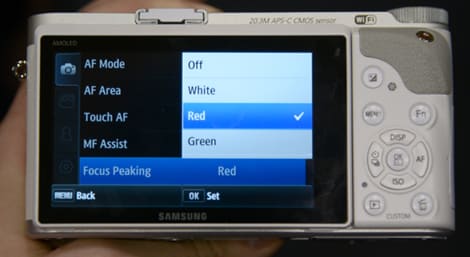

Size & Handling
{{section_header}}{{section.name}}{{/section_header}}
On the right side of the camera is a small bump grip that is only likely to fit well into fairly small hands. If you're used to the grips on traditional DSLR cameras, then the NX1000's small grip will feel inefficient and awkward. Still, it works well enough if, especially if you have a small lens attached to the camera.
The dimensions for the camera (body only) are as follows: 4.59 x 2.46 x 1.44 inches and 0.48 pounds (without battery or memory card.
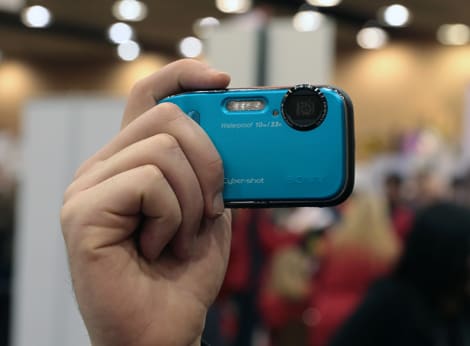
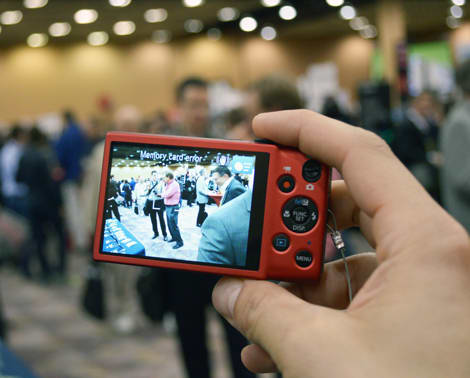
Modes Overview
{{section_header}}{{section.name}}{{/section_header}}
The mode dial on the top of the NX1000 has the following options: SMART Auto, Program (P), Aperture-Priority (A), Shutter-Priority (S), Manual (M), Lens Priority, Magic, Scene, Movie, and WiFi.

Auto Mode
{{section_header}}{{section.name}}{{/section_header}}
We found ourselves swapping back and forth between Program and SMART Auto on the NX1000 whenever we felt too lazy to set manual controls ourselves. Program mode worked fine, and was less finicky, for most shooting situations. But we liked using SMART Auto whenever we shot easily-recognizable scenes. By this we mean closeups, landscapes, shots of the skyline, stuff like that. SMART Auto detected the fact that we were shooting these scenes well and adjusted accordingly.
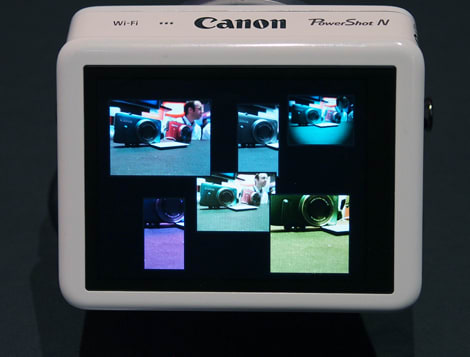
Movie Mode
{{section_header}}{{section.name}}{{/section_header}}
Remember when it was a novelty for an interchangeable lens camera to record video? That was just a few years ago, but today it's a commonplace feature that nearly every manufacturer includes. The Samsung NX1000 can shoot Full HD 1080p video using a 30p frame rate. It can even record stereo audio with its built-in microphone, but we suggest using a separate audio recorder if you care about getting the best audio quality along with your video.
The mirrorless design of the NX1000 means the camera can autofocus during recording—and issue that plagues traditional DSLRs—and Samsung claims the camera can record for up to 25 minutes in a single clip. In addition to shooting 1080/30p video, the NX1000 has a new cinema mode setting that uses a 24p frame rate and a strange 1920 x 810 resolution (that's a very wide aspect ratio). You can also record 1280 x 720 video, 640 x 480 video, and a low-res 320 x 240 resolution meant to be shared over WiFi.
Drive/Burst Mode
{{section_header}}{{section.name}}{{/section_header}}
The NX1000, like all three of Samsung's new NX cameras, can shoot 8 photos per second at full resolution. This is quite impressive for the little camera, and it's one of the best continuous shooting modes we've seen from a compact system camera. In our time with the camera, however, we noticed the high speed mode took up a lot of processing power. Often, after shooting eight photos in a row, the camera had to play catchup and sat frozen for a few seconds with the word "processing" displaying on the LCD. This was a pre-production model we shot with, however, so it is possible the finalized cameras will improve on this issue.
Playback Mode
Picture Quality & Size Options
{{section_header}}{{section.name}}{{/section_header}}
There are a ton of size options on the NX1000 and the camera offers three different quality settings (Super Fine, Fine, and Normal), as well as a full-resolution RAW photo mode. The top photo option snaps a 20-megpixel still image using a 3:2 aspect ratio. Other sizes include three 16:9 aspect ratio options (the largest being 7.8 megapixels), four 1:1 aspect ratio options (largest being 13.3 megapixels), and four other 3:2 settings in addition to the 20-megapixel size option.
Other Modes
{{section_header}}{{section.name}}{{/section_header}}
Built-in Wifi
This is one of the most prominent new additions to the NX1000, but simply calling the feature "built-in WiFi" doesn't really do it justice. The WiFi functionality on the NX1000 has been greatly improved over previous Samsung cameras with WiFi, and, in addition to offering the ability to transfer photos to a computer wirelessly, the NX1000 can also act as a WiFi hotspot, perform an auto backup of photos to a computer, and even enable your smartphone to function as a wireless viewfinder remotely. There's the convenient addition of a mini browser window that allows you to sign-off on the terms and conditions that may be required to access a WiFi hotspot. The NX1000 is Samsung's most prominent "NX camera for sharing" thanks to the presence of a dedicated WiFi button on the top of the model. Neither the NX20 and NX210, both of which have the same built-in WiFi functions, include this button.
We got to see some of these features in action, and we were impressed by the capability, but we also know that WiFi functions can be a bit iffy at times and often require a bit of trial-and-error before they run smoothly. We won't be surprised if these features give us some frustration when we test the NX1000 back at our labs.
Focus
{{section_header}}{{section.name}}{{/section_header}}
Focus on the NX1000 can be set manually, or you can use a single or continuous autofocus system. We found the autofocus system worked accurately in bright light, and the continuous autofocus worked very well for video recording. Sometimes the continuous AF mode took a while to change between extreme focus planes, but the adjustments were still made smoothly by the camera.
Exposure & Metering
{{section_header}}{{section.name}}{{/section_header}}
The shutter on the NX1000 can be set from 30 seconds (or bulb up to four minutes) down to 1/4000th of a second, which means it can't go quite as fast as the NX20 (1/8000th of a second). If setting the shutter and aperture is too much for you, there's also a basic exposure adjustment feature that lets you set the exposure on a -3 to +3 EV scale.
ISO
{{section_header}}{{section.name}}{{/section_header}}
The ISO range on the NX1000 goes from ISO 100 to ISO 12800, and the settings can be selected in whole or 1/3-stop values. In auto ISO mode, you can set the ISO limit all the way up to ISO 3200. This upper limit of ISO 12800 is the same maximum ISO available on Samsung's two other new NX cams, the NX20 and NX210.
White Balance
{{section_header}}{{section.name}}{{/section_header}}
White balance presets on the NX1000 include Daylight, Cloudy, Fluorescent (white, neutral, or dark), Tungsten, and Flash. You can also set white balance manually by putting in a specific Kelvin color temperature, or using a white card to take a calibration photo. Of course, there's also the auto white balance setting as well.
Image Stabilization
{{section_header}}{{section.name}}{{/section_header}}
The NX1000 relies on lens stabilization, rather than utilizing a built-in image stabilization system. The camera allows you to turn the OIS on and off, as well as select from two options (Mode 1 and Mode 2). We found the stabilization system worked well for every-day use, and we didn't need a tripod to get steady shots with the camera—even when shooting with the large 18-200mm NX lens.
Picture Effects
{{section_header}}{{section.name}}{{/section_header}}
Samsung calls its set of picture effects "picture wizard" functions, but the list is relatively traditional: vivid, portrait, landscape, forest, retro, cool, calm, classic, and custom. You can also set parameters for contrast, sharpness, saturation, and color in the picture wizard menu.
Additionally, Samsung includes Smart Filters for both movie mode and still image mode that allows you to apply a number of digital effects to your images. These include vignetting (movie only), miniature, fish-eye, sketch, de-fog, halftone dots, soft focus, old film (2 options), and negative.
Other Controls
{{section_header}}{{section.name}}{{/section_header}}
Many cameras incorporate a built-in panorama mode to allow you to capture wide shots of skylines or great vistas. The NX1000 has its very own panorama mode, including a 3D panorama setting as well. Unfortunately, we didn't get to test this feature, so we can't report on its capability at this time.
Lens Mount & Sensor
{{section_header}}{{section.name}}{{/section_header}}
The Samsung NX1000 comes with a 20.3-megapixel APS-C CMOS sensor, which is quite big for a camera of this size. This image sensor alone is comparable to that found in many high-end DSLRs, but there are many other factors that contribute to strong image quality in addition to the image sensor. Just because the NX1000 has a large CMOS chip doesn't mean it's going to produce photos that are as good as an expensive DSLR—but it certainly doesn't hurt.
The camera uses the Samsung NX Mount system, which means you can use a variety of lenses with the NX1000. This is arguably the camera's most impressive feature, as the body of the NX1000 isn't much larger than a medium-sized point-and-shoot camera. This is an interchangeable lens camera for people who want the flexibility of multiple lenses, but hate lugging around bulky DSLRs all day.
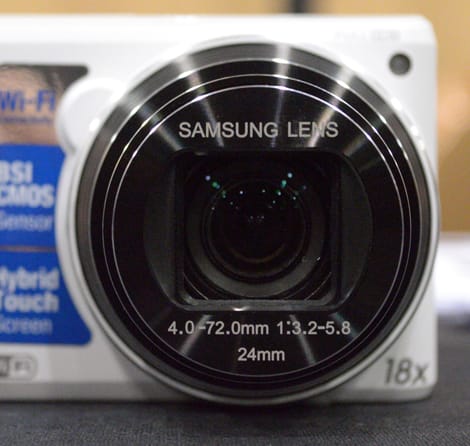

LCD
{{section_header}}{{section.name}}{{/section_header}}
Stuck on the back of the NX1000 is a stationary, 3-inch LCD screen. The screen isn't spectacular, but it's of decent size (especially for a compact camera) and it features a resolution of 921k pixels. The camera has no built-in viewfinder, so if you're an old school photographer who can't stand framing your shots with an LCD then you should probably look elsewhere.

Flash
{{section_header}}{{section.name}}{{/section_header}}
There is no built-in flash on the NX1000, but Samsung bundles a small flash with the camera that attaches via the accessory shoe. The provided flash not only offers red-eye reduction and fill-in settings, but its paint job will also match the chosen color of your NX1000 camera. Because there's nothing worse than having a pink camera and a black flash, right?

Jacks, Ports & Plugs
{{section_header}}{{section.name}}{{/section_header}}
On the side of the NX1000, behind a small protector, you'll find two ports: a micro USB terminal, and a micro HDMI output. Both ports are extremely important—micro USB is a great backup for copying photos to a computer if you don't have a card reader (or can't do it wirelessly), and Samsung makes a few accessories that connect via this port as well. The HDMI connector is the only video output on the camcorder, so it's necessary if you want to watch videos on your HDTV.
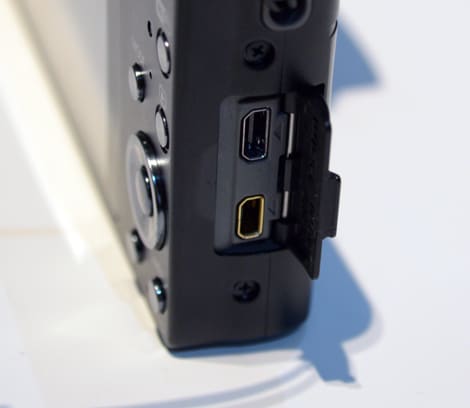
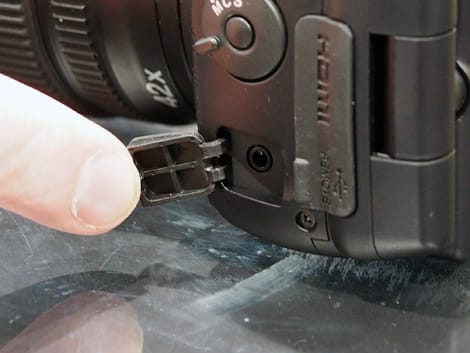
Battery
{{section_header}}{{section.name}}{{/section_header}}
A bottom-loading compartment houses the NX1000's rechargeable battery pack. The provided battery is a 1030mAh aptly named the BP1030.

Memory
{{section_header}}{{section.name}}{{/section_header}}
The camera works with all types of SD memory cards, including SDHC and high-capacity SDXC cards. Samsung guaranteesati compatibility with cards up to 128GB capacity.

Conclusion
The set of features on the NX1000 are nearly as robust as Samsung's new top-line NX cam, the NX20 (read our review here). The main differences come down to body design, as the NX1000 lacks some of the more sophisticated features like a built-in viewfinder, tiltable LCD, and a built-in flash. The NX1000 is also a more compact model than its higher-end brother, and its body is only slightly larger than that of a mid-size point-and-shoot camera.
This makes the guts of the NX1000 rather impressive for a compact system camera. Its 20.3-megapixel CMOS sensor may be poised to give the Sony NEX cameras a run for their money. But we'll have to wait and see how well the NX1000 performs in our labs before we can confirm or deny that statement.
We enjoyed shooting with the NX1000, but we couldn't help but feel the camera's body was a bit too weak and too compact to handle some of the big lenses we attached to its subtle frame. The right side grip is good with a small lens (like the 20-50mm kit lens), but it felt inadequate with others. Still, we were able to get some fantastic shots with the camera when using the bulkier 18 - 200mm telephoto lens (we just needed two hands to keep it steady).
We saw a few performance issues with lag (when changing shooting modes), and some slow processing times when using the camera's continuous shooting mode on the NX1000. These could have been the result of shooting with pre-production models, so it's definitely something we'll look into when we get the camera into our labs for a full review. Other than that, we came away fairly impressed with this compact system camera.
{{product.vanity}}
Sample Photos
{{section_header}}{{section.name}}{{/section_header}}
Specs
{{manufacturer_specs_table}}
Meet the tester
Jeremy is the video expert of our imaging team and Reviewed.com's head of video production. Originally from Pennsylvania and upstate NY, he graduated from Bard college with a degree in film and electronic media. He has been living and working in New England since 2005.
Checking our work.
Our team is here to help you buy the best stuff and love what you own. Our writers, editors, and experts obsess over the products we cover to make sure you're confident and satisfied. Have a different opinion about something we recommend? Email us and we'll compare notes.
Shoot us an email